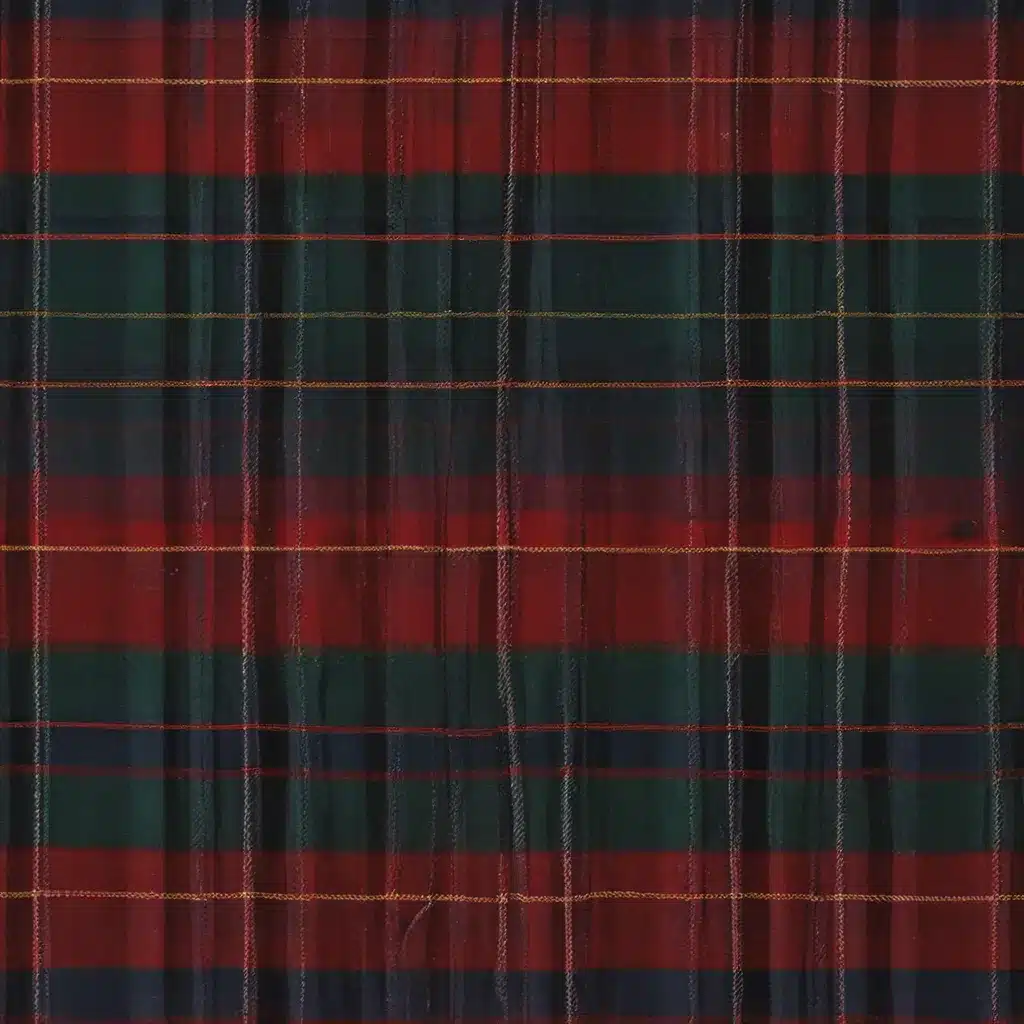
The Timeless Allure of Tartan
I’ll admit, I’ve always been fascinated by the intricate patterns of tartan. There’s just something about those bold, intersecting stripes that capture the spirit of Scotland in a way that feels both ancient and contemporary. As I’ve delved into the rich history of this iconic textile, I’ve discovered a tale that’s as captivating as the designs themselves.
From the Highlands to the World
Tartan’s origins can be traced back to the Scottish Highlands, where it first emerged as a practical, everyday fabric for the local clansmen. These early tartans were woven using natural dyes, resulting in a relatively limited color palette of earthy hues. But what they lacked in vibrancy, they more than made up for in symbolism. Different patterns became associated with specific clans, allowing the Highlanders to instantly recognize friend from foe.
The Tartan Uprising
However, this tradition of clan-specific tartans would face a major setback in the 18th century. After the Jacobite uprising of 1745, the British government saw tartan as a threat to their control and promptly banned its use. For a time, the vibrant patterns disappeared from the Scottish landscape, relegated to the shadows of history.
The Great Tartan Revival
But the tartan spirit could not be extinguished. In 1822, King George IV’s grand visit to Scotland ignited a newfound fascination with all things Highland. Suddenly, tartan was back in vogue, with nobility and commoners alike clamoring to don the distinctive patterns. This “Tartan Revival” saw the emergence of clan tartans as we know them today, as weavers like the Wilsons of Bannockburn meticulously cataloged and reproduced the various designs.
The Enduring Appeal of Tartan
Since then, tartan has become a global phenomenon, transcending its humble Highland origins to become a symbol of Scottish identity, pride, and style. From the runways of Paris to the streets of Tokyo, this versatile textile has adapted to the times, appearing in everything from high fashion to everyday attire. And with the establishment of the Scottish Register of Tartans in 2009, the preservation and celebration of these unique patterns shows no signs of slowing down.
Discovering Your Clan Connection
As I wander through the Loch Ness Shores campsite, surrounded by the majestic Highlands, I can’t help but feel a deeper connection to this land and its rich tapestry of history. Whether you have Scottish roots or simply appreciate the timeless allure of tartan, exploring your clan’s unique pattern can be a truly rewarding journey of self-discovery. So why not take a moment to uncover the story behind your own family’s tartan?
The Artistry of Tartan Design
Of course, the true magic of tartan lies in the artistry of its design. Each intricate pattern is a masterpiece, with countless variables at play – the width and spacing of the stripes, the precise hues of the dyes, and the delicate balance of the overall composition. It’s a level of detail that can captivate the eye and stir the soul.
The Tartan Trailblazers
And the weavers who bring these designs to life are true unsung heroes. Companies like Lochcarron of Scotland have been perfecting the craft of tartan for generations, carefully preserving traditional techniques while also embracing innovation. From the expert dyers who coax vibrant colors from natural fibers to the skilled weavers who meticulously construct each pattern, these artisans are the true custodians of tartan’s enduring legacy.
The Global Tartan Diaspora
But tartan’s influence extends far beyond the borders of Scotland. As the Scottish diaspora has spread across the world, so too has the love for this iconic textile. From Canada to Australia, tartan has become a touchstone for those seeking to connect with their Scottish heritage. And with modern tartans being designed for everything from corporations to television shows, the tartan tradition continues to evolve and adapt to the needs of a global audience.
A Tartan for Every Occasion
Nowadays, tartan is more than just a symbol of clan identity – it’s a versatile fashion statement that can be worn on any occasion. Whether it’s the rugged, earthy tones of a traditional hunting tartan or the bold, vibrant hues of a modern corporate design, there’s a pattern to suit every taste and every event. And with the rise of bespoke tartan services, the possibilities are truly endless.
The Future of Tartan
As I sit here, gazing out over the rolling hills of the Highlands, I can’t help but wonder what the future holds for this enduring textile. Will the ancient clan patterns continue to hold sway, or will contemporary designers push the boundaries of what’s possible with tartan? One thing’s for certain – no matter how the world changes, the allure of Scotland’s iconic tartans will never fade. They are a living, breathing testament to the resilience and creativity of the human spirit, a timeless emblem of a nation’s proud heritage.
Conclusion: Embracing the Tartan Tradition
So, the next time you find yourself captivated by the mesmerizing patterns of tartan, take a moment to reflect on the rich history and cultural significance that lies behind it. Whether you’re donning a family kilt or simply adding a tartan scarf to your wardrobe, you’re participating in a tradition that spans centuries and crosses continents. It’s a unique and powerful connection to the land and people of Scotland, one that I’m proud to be a part of. And who knows – maybe your own tartan story is just waiting to be discovered.

